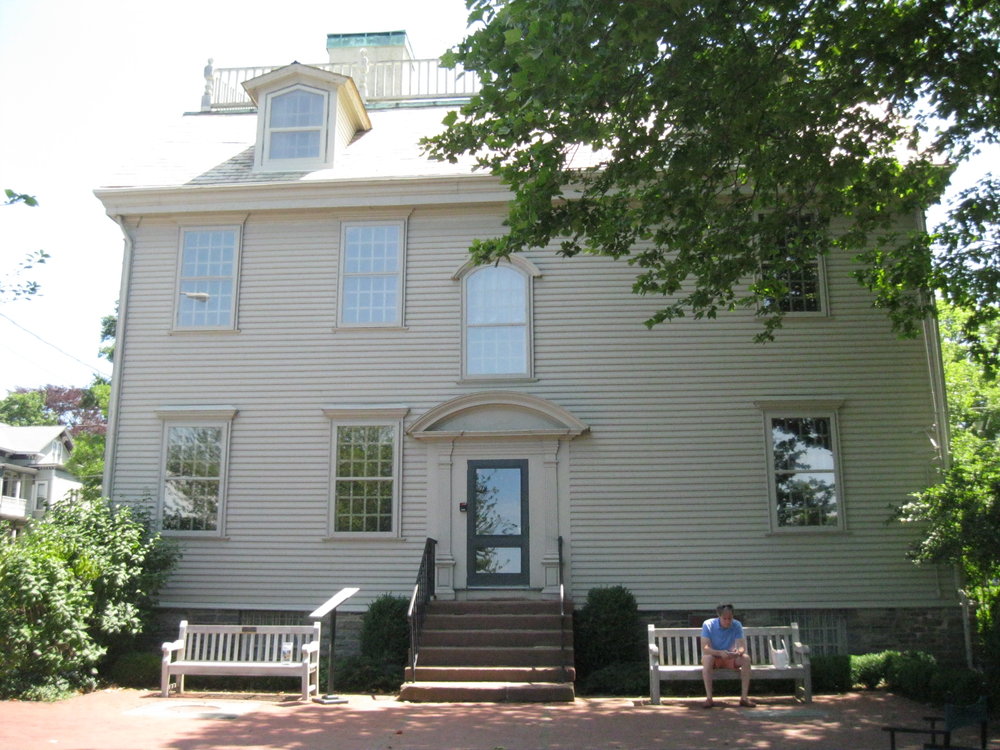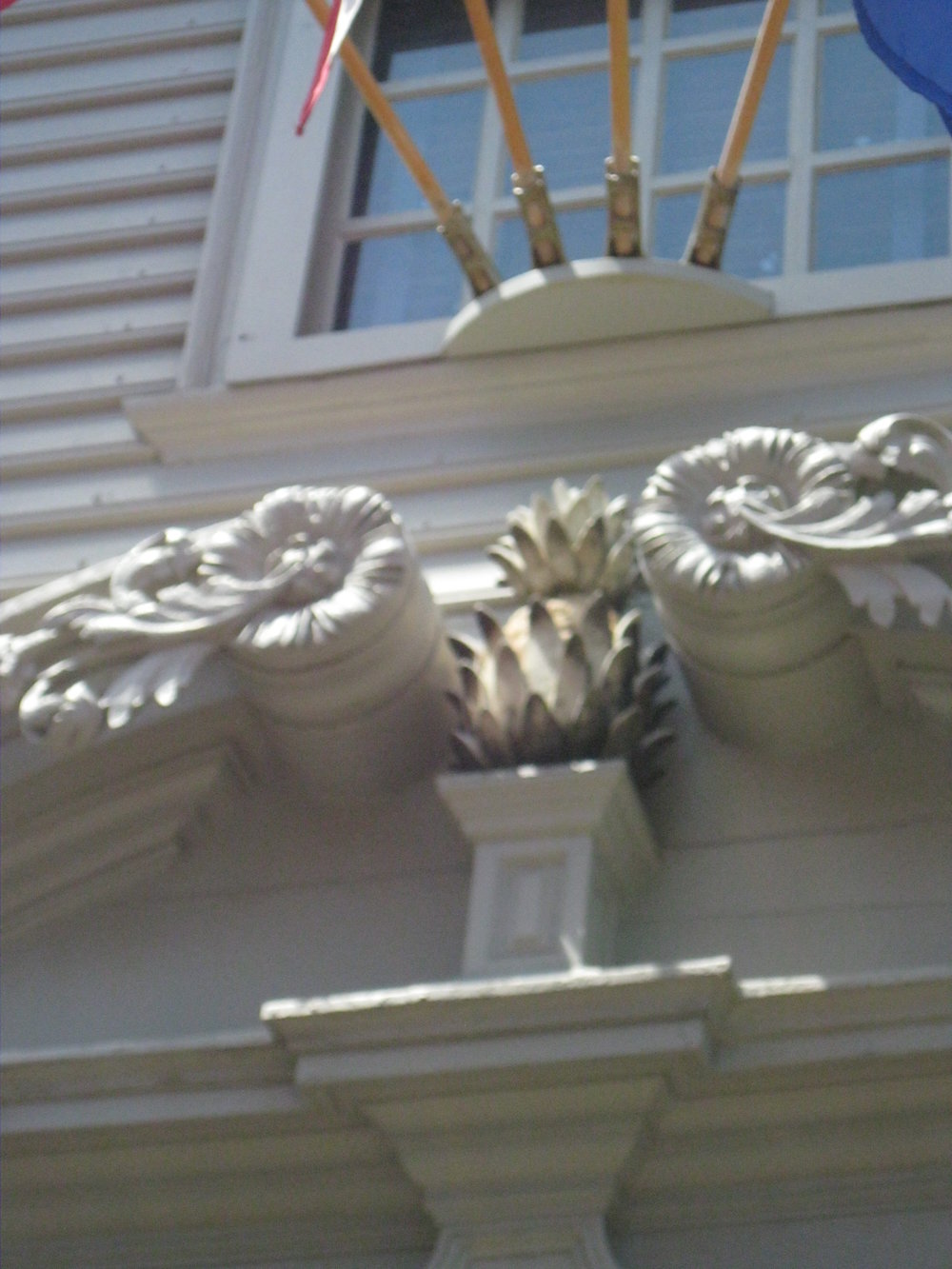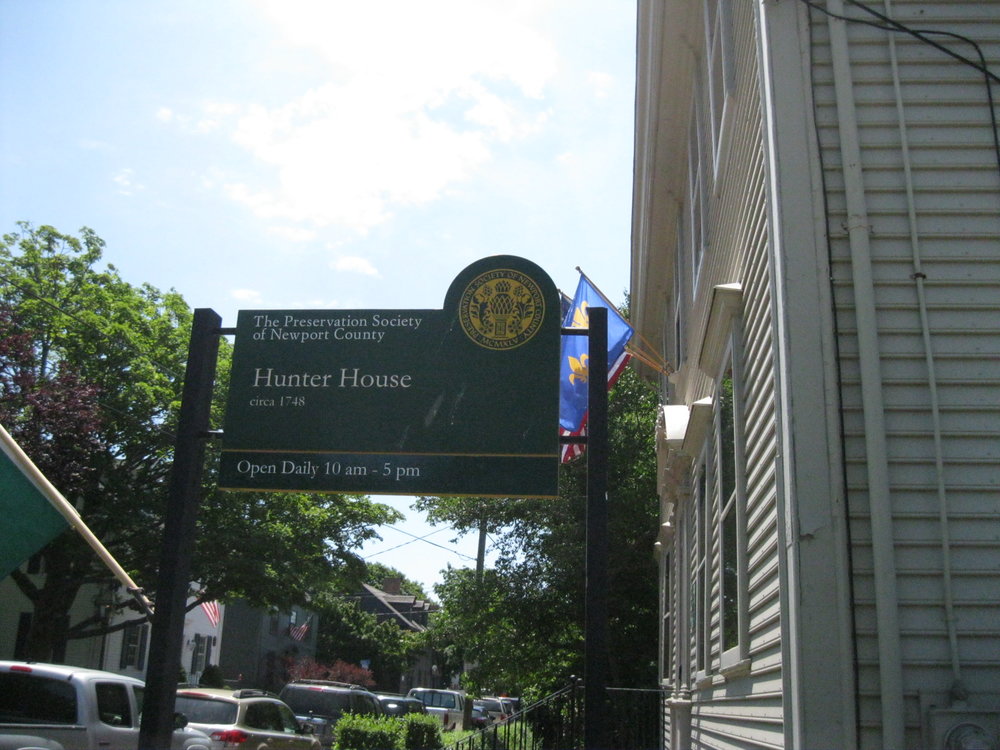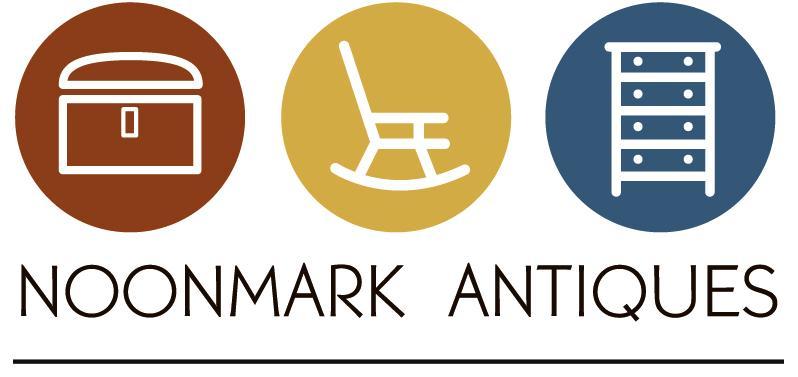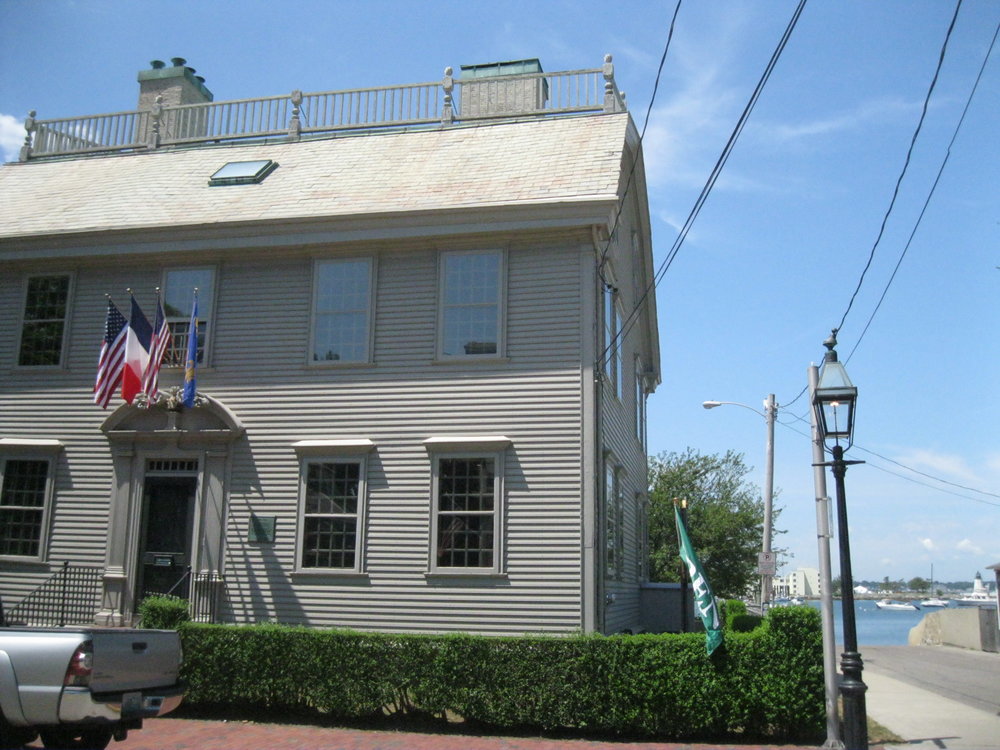
Two years ago, I scheduled the Hunter House as a place to visit on our trip to Newport, Rhode Island. The tours of Hunter House are a separate package from the grand mansion tours and the price of a ticket is $30. Townsend & Goddard furniture are kept here and we decided to come back another time when we could take our time on the tour. A year later, I made plans to return to Newport. What better way to celebrate my 60th birthday than to devote a morning to the Hunter House? After a tasty breakfast at the Artful Lodger B&B, we drove to 54 Washington Street and found street parking. Be prepared, the Hunter House does not compare in any way to the grand Newport Mansions. However, in its time, it was home to a number of influential people.There were no visitors when we arrived around 10:40 that day, but, the rules are a bit quirky here and they might have made us wait until 11:00 ( there were at least 2 tour guides available) but after some persuasion, we proceeded.

Our guide David was very knowledgeable and we asked him to tell us EVERYTHING he knew. The original portion of the house was built in 1748 for Colonel Deputy Governor Jonathan Nichols, Jr. Nichols died in 1756 and Colonel Deputy Governor Joseph Wanton purchased the house. The house gained an addition and a second chimney along with a central hall during Wanton’s tenure. These changes produced a formal Georgian mansion. However, Wanton was a loyalist and a merchant during the Revolution and was imprisoned for treason. After the Revolution, Senator and Ambassador William Hunter purchased the house and for this man the house was named.
No photography is permitted in the Hunter House because some of the furnishings are privately owned and on loan. It is worth the trip to see these pieces. In the Northeast parlor, a John Goddard triple top gaming table rests beside one wall. It has four open talon claw and ball feet. Pilasters with carved Corinthian capitals frame the fireplace while tiny winged cherub faces smile down on visitors.
The Southeast sitting room has grain painted pine panels that resemble walnut. And here is where I found a friend. I had seen this painting by Gilbert Stuart at the Yale University Museum.
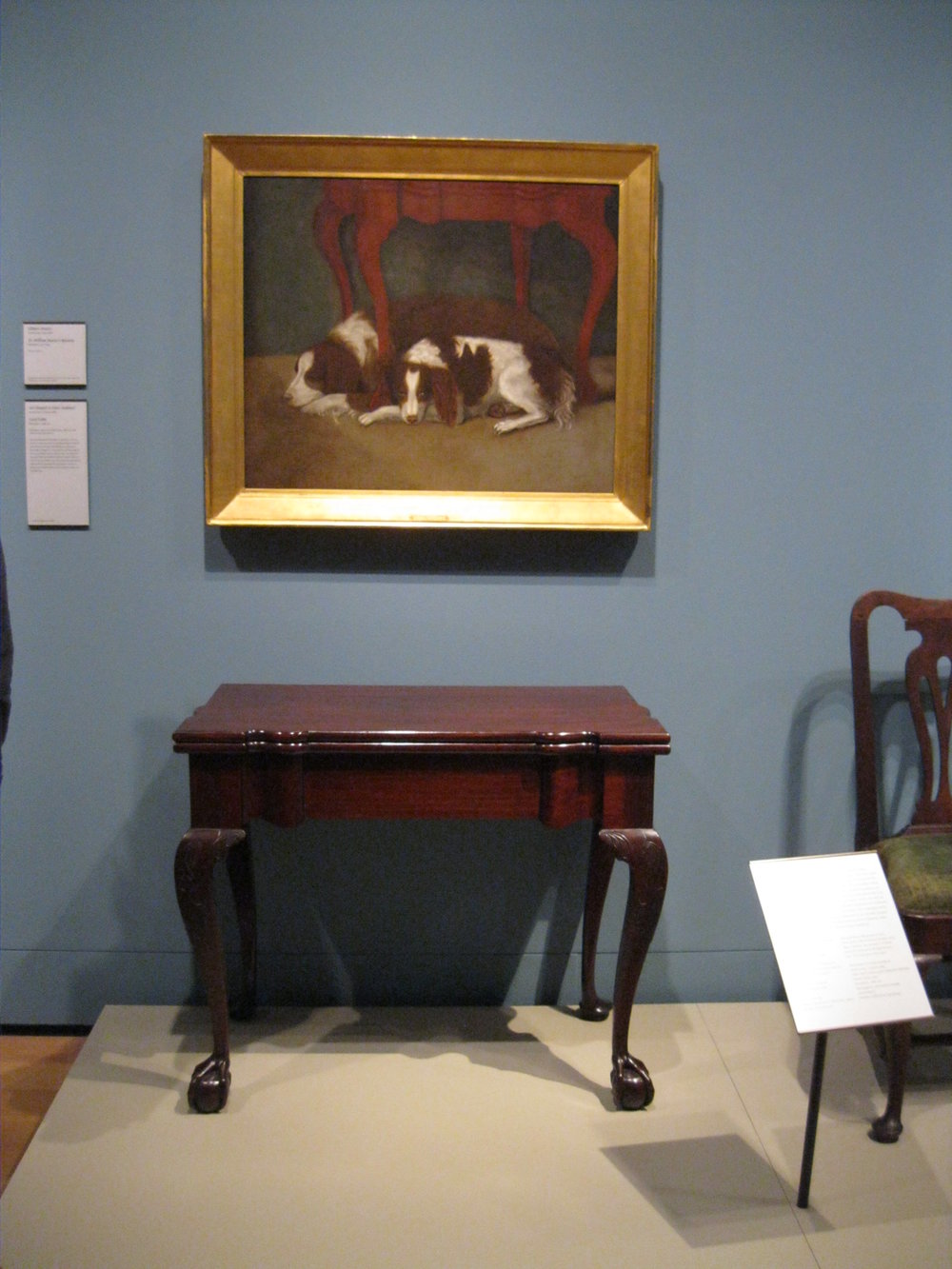
There is also a splendid Honduran mahogany desk with duck feet in this room. A painting by Cosmo Alexander is featured here. Alexander was one of Gilbert Stuart’s first teachers.
In the hallway outside the sitting room is a massive Townsend King of Prussia marble top side table with front web claw and ball feet in the front and spade feet in the rear. A cherry tall case clock by James Wady keeps time in the hallway. There are only six known Wady clocks in existence.
The keeping room has a very large fireplace with a 1740 Newport Harbor scene hanging above. Jacobean furniture has the stage here, along with Westerwald jars and Newport pewter by Melville and Belcher.
The dining room or reception room is decorated with pine panels painted as rose cedar. They are beautiful and I asked Charlie if we could do this to our home.
The mahogany staircase is not original to the home. The twisted balusters are a marvel of turning skill. The stairway leads to another room with panels of rose cedar paint. A discovery above the fireplace reveals a very early landscape painting of the settlement of Newport. A Goddard highboy resides here along with a Chippendale mirror with a perched phoenix.
The upper hallway shows a sample row of chairs from different periods to compare and contrast. Admiral de Ternay’s room is above the Northeast room and is almost identical to the room beneath with siblings of the smiling cherubs. It is painted a moss green color. A curious image of the Touro Tower hangs above the fireplace. The focal point of this room is a Townsend/Goddard Santa Domingo Mahogany highboy.
Across the hall is the Hepplewhite room. The central feature of this room is a beautiful Holmes Weaver Hepplewhite card table. A piece by John Townsend in this room displays exquisite bellflower decoration. It is amazing that Townsend could transition from Chippendale to Hepplewhite with such ease.
The final upstairs room displayed an excellent white trapunto bed cover. The stuffed work was extraordinary. Again, this room was identical to the room below in terms of layout.
Originally, the front door faced the harbor. Legend has it, that when the master was home, he put a pineapple outside on a post to notify neighbors of his safe return.
